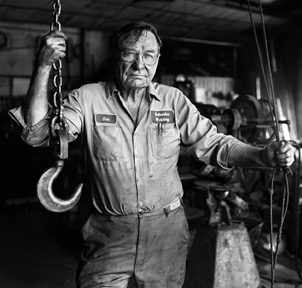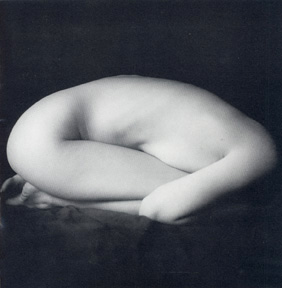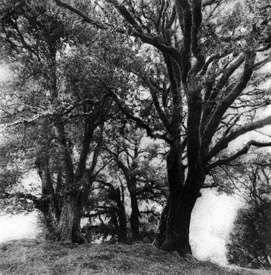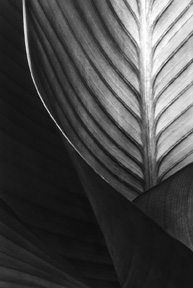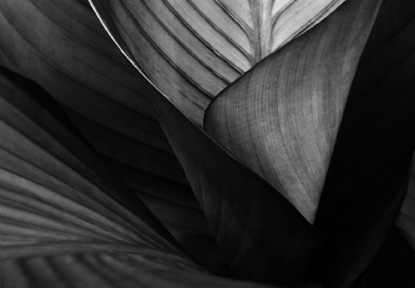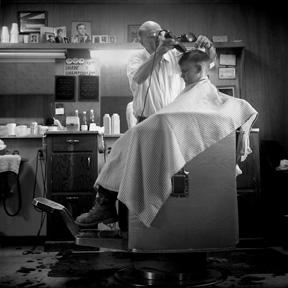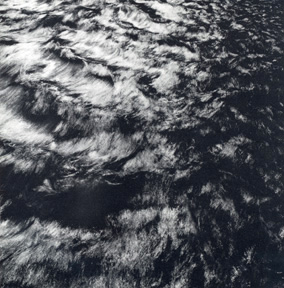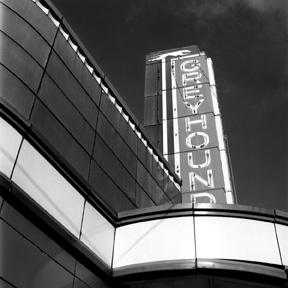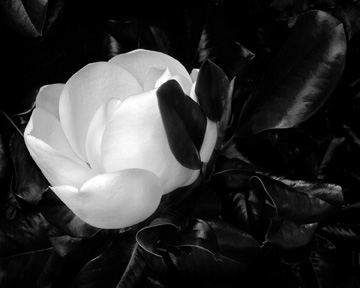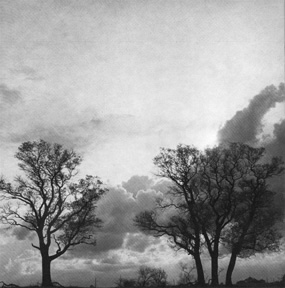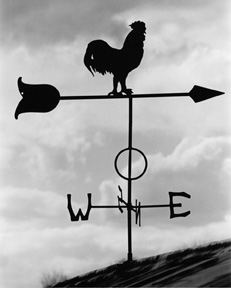The Collective Russell Cothren
The exhibit currently on display in Mullins Library demonstrates that UA photography editor Russell Cothren not only can shoot beautiful images, he also can print them in unusual and creative ways.
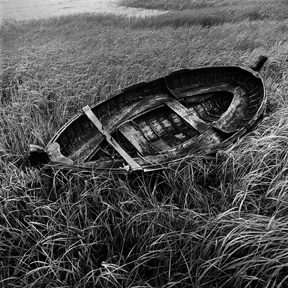
“The Collective Russell Cothren” highlights Cothren's skill in all aspects of the photographic process.
Cothren is a largely self-taught photographer who came to the profession in a roundabout way. He was introduced to 35mm photographic techniques while working as a “printer's devil” for the local newspaper in his hometown of Siloam Springs. At that time, painting was his hobby, and he began taking snapshots to record images that he wanted to paint later. He quickly became fascinated with the immediacy of film and soon abandoned painting altogether.
Cothren's background in lithography translated into an interest in alternative printing techniques for photos. He traveled to Cape Cod to study bromoil printing and transfer methods. Popular in America in the 1920s, bromoil prints are created by washing a gelatin silver bromide print with a potassium bichromate solution, which bleaches the image and hardens the gelatin. Then greasy inks are applied by brush, the ink being absorbed by the softer areas of the gelatin in proportion to the amount of silver in the original bromide print.
Cothren also studied photogravure techniques in San Francisco. Photogravure, a process developed in the 1850s, involves creating a negative on a copper plate treated with bitumen powder, then washed with successive ferric chloride solutions to etch the plate in depths corresponding to the variations of light and dark on the image. The plate is then inked and printed in a printing press.
Cothren is quick to point out, however, that the photographs on display represent something more to him than merely images to record and develop in creative ways that suit his artistic talents. Says Cothren, “You look and see a picture. I look and see a memory.” During a recent walk through of the exhibit, Cothren described the wealth of experience lying within some of the images. “As an artist, my muse is about exploring my land and its people,” says Cothren. “My photographs are postcards of the experience.”
There are, for instance, those images from Siloam Springs that represent well-known characters and scenes from his childhood, such as the train depot and Rex Robrahn's welding shop, or Carl Stinnet's barber shop in Horatio, Arkansas'”all places fondly remembered where legendary characters congregated. And then there are postcard glimpses of the unusual and far away, such as Mount Tamalpais in California, an old Spanish fort door on the border between Mexico and Texas, and a oddly surreal image of a hand-crafted, traditionally Dutch skiff posed in tall grass.
That last image represents a small victory for Cothren, as it was taken after the boat sprang a leak while he was traversing a sea inlet with the boat's owner. Cothren, who could not swim, reports he was dismayed to see the bottom of the boat filling with water, but the skipper of the boat merely said, “What do you think that rusty coffee can is for?” Cothren thought, “Great. I've come all the way up here to Cape Cod to die in the rickety boat of a crazed hippie.”
(Click thumbnail image to enlarge.)

